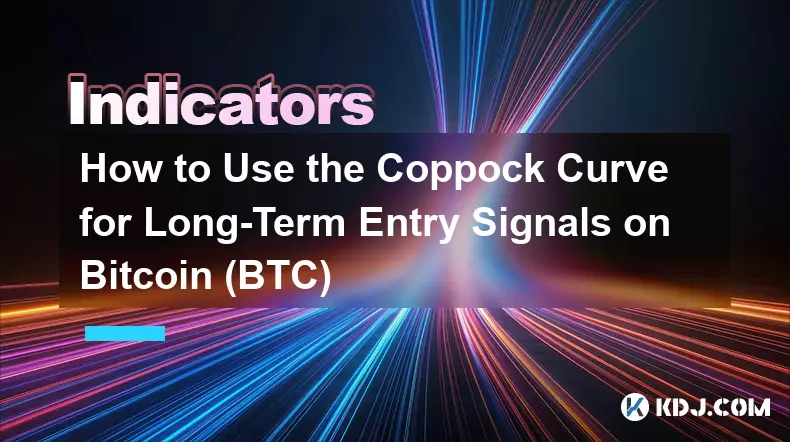-
 bitcoin
bitcoin $107015.826941 USD
-2.18% -
 ethereum
ethereum $3637.352324 USD
-5.18% -
 tether
tether $0.999831 USD
-0.02% -
 xrp
xrp $2.338078 USD
-6.23% -
 bnb
bnb $998.272150 USD
-6.97% -
 solana
solana $167.598257 USD
-10.12% -
 usd-coin
usd-coin $0.999863 USD
0.01% -
 tron
tron $0.282573 USD
-5.09% -
 dogecoin
dogecoin $0.169891 USD
-7.39% -
 cardano
cardano $0.557554 USD
-7.03% -
 hyperliquid
hyperliquid $39.914802 USD
-5.85% -
 chainlink
chainlink $15.414549 USD
-9.97% -
 bitcoin-cash
bitcoin-cash $510.361911 USD
-4.26% -
 ethena-usde
ethena-usde $0.999194 USD
-0.03% -
 stellar
stellar $0.282092 USD
-6.07%
How can you confirm KDJ signals with other indicators like MACD?
Combining KDJ and MACD improves trading accuracy by confirming signals through crossovers, divergences, and trend alignment, reducing false entries in volatile crypto markets.
Oct 23, 2025 at 08:51 pm

Understanding KDJ and MACD in Cryptocurrency Trading
The KDJ and MACD indicators are widely used tools in the cryptocurrency market to identify potential price movements. The KDJ oscillator, derived from the Stochastic indicator, consists of three lines: %K, %D, and %J. It helps traders detect overbought or oversold conditions. Meanwhile, the MACD (Moving Average Convergence Divergence) measures the relationship between two exponential moving averages and provides signals through crossovers, divergences, and histogram bars.
When applied together, these indicators can strengthen trading decisions by reducing false signals. In the volatile environment of digital assets, confirmation from multiple technical tools increases the reliability of entry and exit points.
1. Aligning Signal Line Crossovers
Combining the crossover patterns of both indicators improves accuracy in timing trades.
- When the KDJ’s %K line crosses above the %D line in the oversold zone (below 20), it suggests a bullish reversal.
- Simultaneously, if the MACD line crosses above the signal line and the histogram begins expanding positively, this reinforces the buy signal.
- Conversely, when %K crosses below %D in the overbought region (above 80), and the MACD line drops below its signal line with a shrinking histogram, it confirms a bearish shift.
- Traders should wait for both indicators to align before executing a position to avoid premature entries during choppy markets.
- This dual confirmation is especially useful during consolidation phases common in altcoin price action.
2. Observing Divergence Patterns
Divergences often precede significant trend changes, and using both indicators increases confidence in spotting them.
- A bullish divergence occurs when price makes lower lows, but the KDJ forms higher lows, indicating weakening downward momentum.
- If the MACD also shows higher lows at the same time, the likelihood of an upward breakout increases.
- On the flip side, bearish divergence appears when price reaches new highs while KDJ peaks decline.
- Confirmation comes when MACD fails to surpass its previous high, suggesting exhaustion in buying pressure.
- These combined divergences are particularly effective on 4-hour and daily charts where institutional activity leaves clearer footprints.
3. Utilizing Overbought/Oversold Zones with Trend Filters
Using KDJ extremes without context can lead to counter-trend mistakes. MACD helps determine whether the market trend supports a reversal.
- In a strong uptrend identified by MACD staying above zero and histogram expansion, oversold KDJ readings may not indicate reversals but rather pullbacks.
- Instead of shorting, traders might look for KDJ rebounds from low levels as continuation signals.
- Similarly, in a downtrend where MACD remains below zero, overbought KDJ levels offer selling opportunities even if not extremely high.
- The MACD acts as a filter—only taking KDJ reversal signals that align with the broader momentum direction.
- This prevents whipsaws during extended rallies or sell-offs typical in Bitcoin and major altcoins.
Traders who combine KDJ and MACD see improved risk-reward ratios due to reduced false entries in fast-moving crypto markets.
Frequently Asked Questions
What timeframe works best for combining KDJ and MACD? The 4-hour and daily timeframes provide the most reliable confluence between KDJ and MACD signals. Shorter intervals like 5-minute or 15-minute charts generate excessive noise, increasing the chance of misleading crossovers. Higher timeframes capture institutional flow better and reduce volatility distortions common in low-cap tokens.
Can KDJ and MACD be used in sideways markets? Yes, both indicators perform well in ranging conditions. KDJ excels at identifying overbought and oversold levels within support and resistance boundaries. MACD tends to hover around zero without strong momentum, signaling lack of trend. Together, they help traders fade the edges of the range with higher precision.
How do you adjust KDJ settings when pairing with MACD? Default KDJ settings (9,3,3) work well for daily analysis. For faster alignment with MACD signals on shorter frames, adjusting to (14,3,3) smooths the curves and reduces erratic swings. This makes crossovers more meaningful and synchronized with MACD histogram shifts.
Is volume necessary when confirming KDJ-MACD signals? While not part of the indicators themselves, volume adds another layer of validation. A KDJ-MACD bullish crossover accompanied by rising volume confirms active buyer participation. In contrast, low-volume confirmations may indicate traps set by whales manipulating retail sentiment. On-chain and exchange volume data enhance decision-making significantly.
Disclaimer:info@kdj.com
The information provided is not trading advice. kdj.com does not assume any responsibility for any investments made based on the information provided in this article. Cryptocurrencies are highly volatile and it is highly recommended that you invest with caution after thorough research!
If you believe that the content used on this website infringes your copyright, please contact us immediately (info@kdj.com) and we will delete it promptly.
- SMCI Stock: Navigating Q3 Results and Trader Moves in the AI Frenzy
- 2025-11-05 02:40:01
- ZKsync Tokenomics: Utility Shift or Just Another Altcoin Bounce?
- 2025-11-05 00:40:13
- BTC, UK, Treasury Plan: Smarter Web's Bold Bitcoin Bet
- 2025-11-05 01:00:17
- Veterans Day Salute: Army & Air Force Exchange's Coin Giveaway and More!
- 2025-11-05 01:30:12
- Altcoin Investment in 2025: Is BlockchainFX Outperforming Render and Pudgy Penguins?
- 2025-11-05 01:30:12
- Sequans, BTC, and the Selling Stack: A Bitcoin Treasury Strategy Under Scrutiny
- 2025-11-05 02:20:01
Related knowledge

Technical analysis for crypto: using RSI and MACD to find trading signals.
Nov 03,2025 at 03:18pm
Decentralized Exchanges Are Reshaping Trading Dynamics1. Decentralized exchanges (DEXs) have gained significant traction by eliminating intermediaries...

Reading crypto charts for beginners: understanding candlestick patterns.
Nov 05,2025 at 02:55am
Introduction to Candlestick Charts in Crypto Trading1. Candlestick charts are one of the most widely used tools in cryptocurrency trading, offering vi...

The Best Exponential Moving Average (EMA) Settings for Crypto Swing Trading
Oct 25,2025 at 04:55pm
The Best Exponential Moving Average (EMA) Settings for Crypto Swing TradingSwing trading in the cryptocurrency market relies heavily on identifying tr...

How to Use the Coppock Curve for Long-Term Entry Signals on Bitcoin (BTC)
Oct 31,2025 at 03:01pm
Understanding the Coppock Curve in Bitcoin Analysis1. The Coppock Curve is a momentum indicator originally designed for stock market indices but has f...

A Beginner's Guide to Finding Divergence with the MACD on the Solana (SOL) Chart
Oct 26,2025 at 12:36pm
Understanding MACD and Its Role in Solana Trading1. The Moving Average Convergence Divergence (MACD) is a momentum indicator widely used in cryptocurr...

How to Use the Aroon Indicator to Identify New Trends in Cardano (ADA)
Oct 26,2025 at 10:18pm
Understanding the Aroon Indicator in Cryptocurrency Trading1. The Aroon indicator is a technical analysis tool designed to identify whether an asset i...

Technical analysis for crypto: using RSI and MACD to find trading signals.
Nov 03,2025 at 03:18pm
Decentralized Exchanges Are Reshaping Trading Dynamics1. Decentralized exchanges (DEXs) have gained significant traction by eliminating intermediaries...

Reading crypto charts for beginners: understanding candlestick patterns.
Nov 05,2025 at 02:55am
Introduction to Candlestick Charts in Crypto Trading1. Candlestick charts are one of the most widely used tools in cryptocurrency trading, offering vi...

The Best Exponential Moving Average (EMA) Settings for Crypto Swing Trading
Oct 25,2025 at 04:55pm
The Best Exponential Moving Average (EMA) Settings for Crypto Swing TradingSwing trading in the cryptocurrency market relies heavily on identifying tr...

How to Use the Coppock Curve for Long-Term Entry Signals on Bitcoin (BTC)
Oct 31,2025 at 03:01pm
Understanding the Coppock Curve in Bitcoin Analysis1. The Coppock Curve is a momentum indicator originally designed for stock market indices but has f...

A Beginner's Guide to Finding Divergence with the MACD on the Solana (SOL) Chart
Oct 26,2025 at 12:36pm
Understanding MACD and Its Role in Solana Trading1. The Moving Average Convergence Divergence (MACD) is a momentum indicator widely used in cryptocurr...

How to Use the Aroon Indicator to Identify New Trends in Cardano (ADA)
Oct 26,2025 at 10:18pm
Understanding the Aroon Indicator in Cryptocurrency Trading1. The Aroon indicator is a technical analysis tool designed to identify whether an asset i...
See all articles










































































